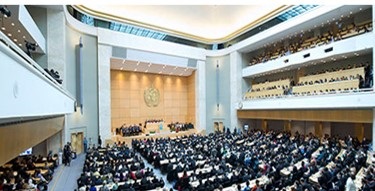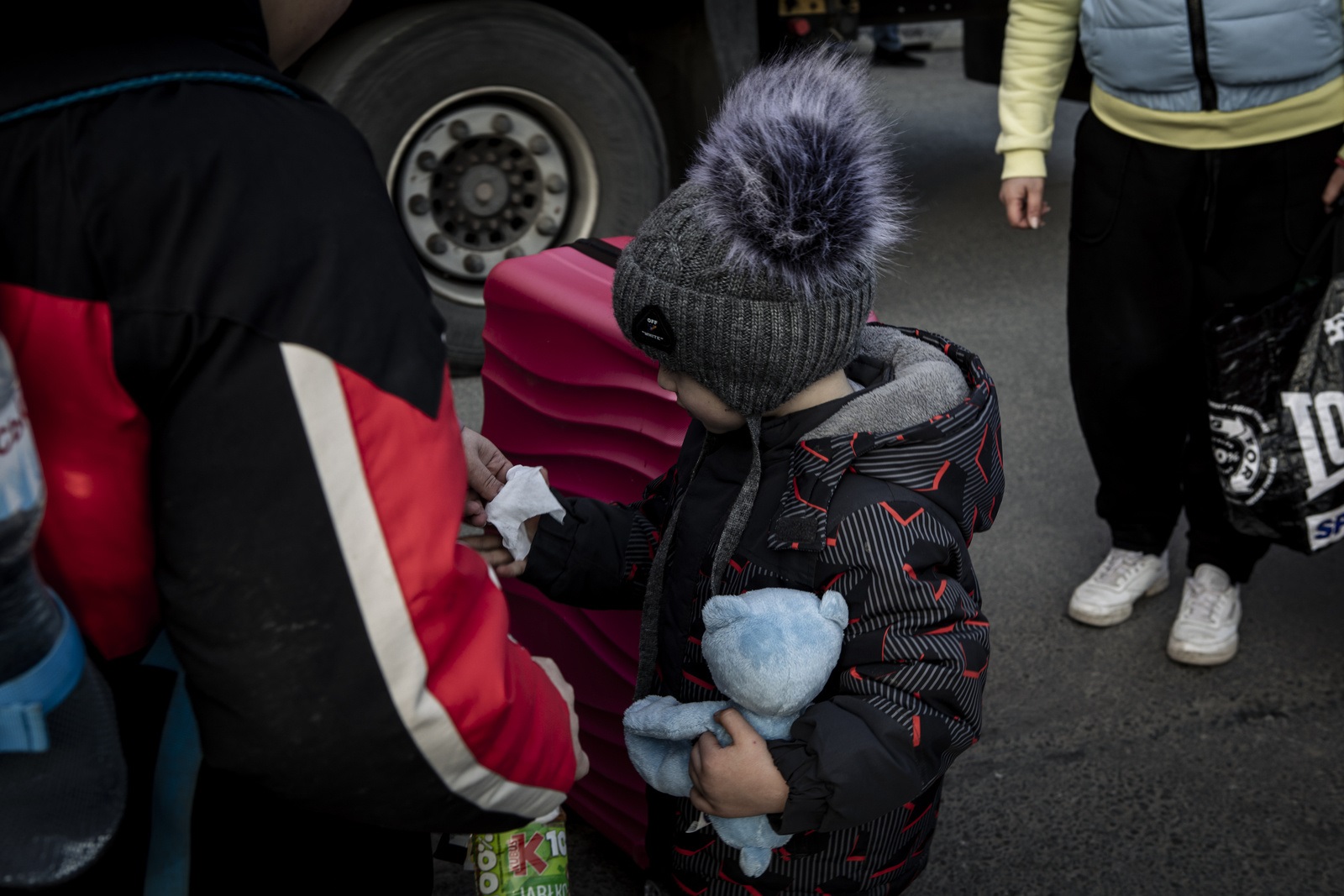Essential Knowledge - Health and Migration
Why a WHO focus on health, migration, displacement and human mobility

Migration and displacement have been a constant dynamic in human history. People have migrated since the beginning of human history to escape poverty, natural disasters, war and dictatorships, and to seek a better lives for themselves and their families. These flows have greatly benefited the world, leading to cultural, societal and intellectual advances. Yet the process and context of migration and displacement may have a negative impact on both migrants and communities. This can happen when their specific health needs are not met or when the circumstances of their movement act as adverse determinants for their health.
The health of refugees and migrants bridges the spheres of human rights, public health, humanitarian assistance and development:
- migrants are human-beings and have a right to health;
- migrant-inclusive health systems improve public and global health outcomes for all;
- saving lives, reducing mortality and morbidity and creating better health systems for both the migrants and the hosting communities are key tenets in the context of displacement and humanitarian crises; and
- healthy migrants are better able to contribute to positive and sustainable development outcomes.
The adoption of inclusive health policies in relations to refugees and migrants has not been universal; in most countries, the level of access to health care for refugees and migrants is determined by factors such as their status; national migration policies; societal values; and their capability in overcoming linguistic, cultural, economic and social barriers. A further determinant is the capacity of the health sector to produce evidence for and advocate for the adoption of adequate public health responses to the growing and changing reality of modern migration, which is a global megatrend. Additionally, migration places individuals in situations that may impact their physical and mental well-being; this is particularly true for those who are forced to flee natural or man-made disasters (whether across borders or within their own country), those in an irregular situation and those with particular vulnerabilities and health and protection needs.
Although comprehensive data sources on refugee and migrant health are scant, and often systematic disaggregation of health data as a function of migratory status is lacking, there are converging views in the available literature. These views identify recurring areas of concern in relation to migration and health outcomes, particularly infectious diseases, noncommunicable diseases, trauma and mental health; gender- and age-specific factors of vulnerability are also identified. Some studies have shown that migrants frequently experience poorer health and a lower average life expectancy than that of the general population and have increased infant/child mortality and lower reproductive health, ineffective access to health services (over- or underuse, or both) and a higher risk of being insufficiently treated by health services.
Current migration and displacement situation and trends
It is estimated that there were 1 billion migrants worldwide in 2020, of whom 281 million were international migrants (i.e. 3.6% of the world population), and approximately 763 million were internal migrants, with a tendency for a marked increase in this last group (UNHCR, 2020). The International Organization for Migration estimates that the vast majority (65%), of international migrants, both displaced people and economic migrants, are workers or people seeking employment. Those seeking employment tend to be a young and productive population, with an estimated average age of 39 years and 15% (37 million) under 20 years of age. There is a marked female preponderance within migration, with women making up 48% of global migrants. The vast majority of these women are economically active.
As of 2020, Europe and North America hosted the greatest number of international migrants, followed by northern Africa and western Asia. The total numbers and percentages of international migrants by World Health Organization (WHO) region (including migrants, refugees and asylum seekers) are shown in Fig. 1.1. The number of people who have been forcibly displaced globally continues to increase as a result of conflict, humanitarian and climate-related disasters. UNHCR has estimated the number of forcibly displaced globally to be at 82.4 million. Refugees and asylum seekers account for approximately 12% of international migrants, as estimated by the United Nations Department of Economic and Social Affairs (UNDESA), and most of them live in countries adjacent to their country of origin.
Developing countries hosted 86% of the world's refugees and Venezuelan migrants. (Note that the term "Venezuelans displaced abroad" is defined by the UNHCR as "persons of Venezuelan origin who are likely to be in need of international protection under the criteria contained in the Cartagena Declaration, but who have not applied for asylum in the country in which they are present". More than half of newly recognized refugees during the first half of 2021 were from five countries: the Central African Republic (71 800 refugees), South Sudan (61 700), the Syrian Arab Republic (38 800), Afghanistan (25 200) and Nigeria (20 300). At the same point in time, there were 92 100 newly displaced Venezuelans (refugees, asylum seekers and migrants) in Latin America and the Caribbean. By the end of 2020, more than three quarters of the global refugee population (15.7 million) was in a situation of protracted displacement.
Figure 1. Total number and percentage of international migrants, refugees and asylum seekers, disaggregated by age and sex, by WHO Region

Source: WHO (2022). The World report on the health of refugees and migrants. Geneva: World Health Organization.
Global legal frameworks, charters and treaties related to migration
Since 1948 a series of international human rights treaties have been adopted and ratified by Member States to give legal form to the inherent human rights enshrined in the Universal Declaration of Human Rights, and these have further expanded and developed the international human rights framework. The nine core international human rights treaties apply to everyone without discrimination (UNHCR, 2020):
- International Convention on the Elimination of All Forms of Racial Discrimination (1965);
- International Covenant on Civil and Political Rights (1966);
- International Covenant on Economic, Social and Cultural Rights (1966);
- Convention on the Elimination of All Forms of Discrimination against Women (1979);
- Convention against Torture and Other Cruel, Inhuman or Degrading Treatment or Punishment (1984);
- Convention on the Rights of the Child (1989);
- International Convention on the Protection of the Rights of All Migrant Workers and Members of Their Families (1990);
- International Convention for the Protection of All Persons from Enforced Disappearance (2006);
- Convention on the Rights of Persons with Disabilities (2007).
Other global frameworks
The Global Action Plan on promoting the health of refugees and migrants (2019–2030)
At the World Health Assembly in 2019, Member States agreed a five-year global action plan to promote the health of refugees and migrants. The Global Action Plan focuses on achieving universal health coverage and the highest attainable standard of health for refugees and migrants and for host populations. The Global Action Plan was fully embedded into the vision of the WHO Thirteenth General Programme of Work, 2019–2023 and its triple billion goals. In
2023, the Seventy-sixth World Health Assembly adopted a resolution to extend
the WHO Global Action Plan on promoting the health of refugees and migrants until
2030.
The Global Action Plan identified the following six priority areas.






Key resources
Migration and displacement dynamics
Health, migration and human rights
- The core international human rights instruments and their monitoring bodies
- International migration, health and human rights
Reports, studies and evidence
Global research agenda on health, migration and displacement: strengthening research and translating...
Globally, there is a global lack of high-quality and policy-relevant research on health, migration and displacement. There is also lack of clarity about...
This publication is a compendium of 49 country examples highlighting efforts in improving refugees’ and migrants’ health following the adoption...
World report on the health of refugees and migrants
Worldwide, more people are on the move now than ever before, yet many refugees and migrants face poorer health outcomes than the host populations. Addressing...
Common health needs of refugees and migrants: literature review
This review explores how the health needs of refugees and migrants may differ from those of host populations, requiring culturally sensitive and effective...
Closing the gap in a generation: health equity through action on the social determinants of health -...
Social justice is a matter of life and death. It affects the way people live, their consequent chance of illness, and their risk of premature death....

Beyond the barriers: framing evidence on health system strengthening to improve the health of migrants...
Analysis of barriers and means to overcome them is central to equity-oriented, rights-based and gender transformative health system strengthening towards...
Capturing the evidence on access to essential antibiotics in refugee and migrant populations
The fourth report of the Global Evidence Review on Health and Migration (GEHM) series synthesizes available evidence on access to essential antibiotics...
Ensuring the integration of refugees and migrants in immunization policies, planning and service delivery...
The third report of the Global Evidence review on Health and Migration (GEHM) series “Ensuring the integration of refugees and migrants in immunization...
Continuum of care for noncommunicable disease management during the migration cycle
Noncommunicable diseases (NCDs) are a major health burden worldwide but global NCD policies do not specifically address refugees and migrants. This interpretative...
- The UCL-Lancet Commission on Migration and Health: the health of a world on the move
- Report on the health of refugees and migrants in the WHO European Region
WHO resolutions, frameworks, and Global Action Plan
- Resolution WHA70.15 on promoting the health of refugees and migrants. In: Seventieth World Health Assembly, Geneva, 31 May 2017
- Promoting the health of refugees and migrants: framework of priorities and guiding principles to promote the heath of refugees and migrants
- Strategy and action plan for refugee and migrant health in the WHO European Region
At its 140th session in January 2017 the Executive Board in decision EB140(9) on promoting the health of refugees and migrants requested the Director-General,...
Rio political declaration on social determinants of health
The Rio Political Declaration on Social Determinants of Health was adopted during the World Conference on Social Determinants of Health on 21 October 2011....

Health of migrants: the way forward
The 2010 Global Consultation on Migrant Health was convened as a result of the 2008 World Health Assembly Resolution on the Health of Migrants,...
Other key global frameworks
- Transforming our world: the 2030 agenda for sustainable development
- Resolution adopted by the General Assembly on 19 September 2016
- Global compact for safe, orderly and regular migration
- The global compact on refugees
- Comprehensive refugee response framework
- New York declaration on refugees and migrants
- Resetting the agenda. In: Report of the 2nd Global Consultation, Colombo, 21–23 February 2017





